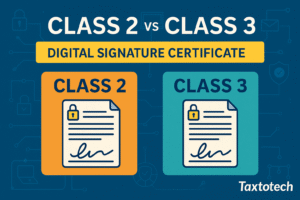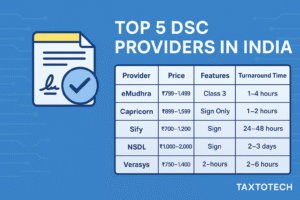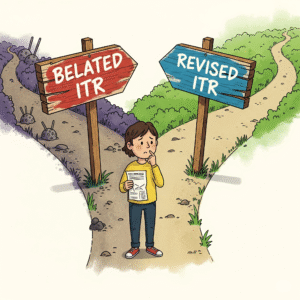Remember when “smart” tax software simply meant it could do calculations faster than you could with a pen and paper? While that was revolutionary in its time, the rapid advancements in Artificial Intelligence (AI) have completely redefined what’s possible. Today, your tax software isn’t just a tool; it’s rapidly becoming an intelligent assistant, constantly learning, advising, and optimizing.
At Taxtotech, we believe that understanding these cutting-edge capabilities is essential for every savvy taxpayer. The future of tax preparation isn’t just coming; it’s already here, woven into the fabric of the most advanced platforms. So, if you’re looking to upgrade or choose your next tax software, the question isn’t if it has AI, but what AI features to look for that will truly transform your tax season. Let’s explore the groundbreaking innovations that are setting the standard for the next generation of tax solutions.
Beyond Basic Automation: The New Era of AI in Tax
For years, tax software focused on automation: pulling data from W-2s, guiding you through forms, and calculating your refund. While invaluable, these functions primarily streamlined the manual process. Modern AI in tax software goes several steps further, moving from simple automation to intelligent augmentation. It aims to replicate and even surpass the analytical capabilities of a human tax preparer for many common scenarios.
This shift is powered by sophisticated AI technologies like:
- Generative AI (GenAI): Capable of understanding and generating human-like text, GenAI enables more intuitive conversational interfaces, can summarize complex tax codes, and even help draft explanations.
- Agentic AI: This advanced form of AI can perform multi-step processes autonomously, making decisions about what to do next based on context and objectives. Think of it orchestrating document review, identifying missing forms, and prepping files for review without constant human prompting.
- Predictive Analytics: AI models analyze vast historical and current financial data, along with macroeconomic trends, to forecast future tax liabilities and identify optimal tax planning strategies with remarkable precision.
- Real-Time Regulatory Alignment: AI systems are now built to continuously monitor legislative changes across thousands of tax jurisdictions, updating compliance rules and calculation logic often within 24 hours of new regulations.
These aren’t just buzzwords; they represent tangible benefits that can save you time, money, and stress.
Essential AI Features You Should Demand in Your Next Tax Software
When evaluating AI tax software, look beyond the glossy marketing and drill down into these specific AI-powered features:
- Intelligent Document Processing (IDP) and Smart Data Extraction:
- What it is: This is far more advanced than simple OCR. IDP uses AI to not just read characters but to understand the context of information on various tax documents (W-2s, 1099s, K-1s, investment statements, receipts). It can automatically extract relevant figures, identify categories, and even reconcile data across multiple sources.
- Why it matters: Drastically reduces manual data entry, minimizes errors, and ensures all pertinent information, even from complex forms like Schedule K-1s, is captured accurately.
- What to look for: The ability to handle a wide variety of document types, high accuracy rates (near 100% for common forms), and integration with cloud storage for easy uploads.
- Proactive Deduction & Credit Identification (Agentic & Predictive AI):
- What it is: This is where AI moves from reactive to proactive. Instead of just asking if you have deductions, the AI analyzes your spending patterns from linked bank accounts, credit cards, and other financial data. It then proactively suggests specific deductions or credits you might qualify for, based on your lifestyle, profession, or recent life events (e.g., energy-efficient home improvements, new business expenses, specific medical costs). It can even run “what-if” scenarios for future planning.
- Why it matters: Uncovers hidden deductions you might otherwise miss, maximizing your refund or minimizing your tax due. Transforms tax prep into a strategic optimization process.
- What to look for: Dynamic questioning that adapts to your answers, personalized deduction suggestions, and predictive capabilities that show the tax impact of financial decisions.
- Real-Time, Contextual AI Chatbots & Virtual Assistants (Generative AI & NLP):
- What it is: Beyond simple FAQs, these are sophisticated conversational AI interfaces that can understand complex tax questions phrased in natural language. They provide instant, accurate answers, guide you line-by-line through forms, explain confusing tax terms, and troubleshoot common issues. Some even offer assistance in multiple languages.
- Why it matters: Provides immediate support 24/7, reducing frustration and wait times. It feels like having a knowledgeable tax expert constantly at your side.
- What to look for: NLP capabilities that understand context and nuance, the ability to provide specific guidance on forms, and seamless escalation to a human expert when a query is too complex for AI.
- Enhanced Error Detection & Audit Risk Mitigation (Machine Learning & Predictive Analytics):
- What it is: AI systems use advanced ML algorithms to scrutinize your entire return for inconsistencies, discrepancies, and potential red flags that could trigger an audit. They cross-reference your entries with historical data, industry benchmarks, and the latest IRS rules. They can even predict areas of higher audit risk and suggest preventative measures.
- Why it matters: Significantly reduces the chance of errors that lead to penalties or audits, providing peace of mind.
- What to look for: Robust internal consistency checks, proactive alerts for potential issues, and features that help you organize and securely store audit-ready documentation.
- Continuous Regulatory Compliance (Real-Time Alignment AI):
- What it is: This AI feature automatically monitors and incorporates the latest changes in federal, state, and even local tax laws and regulations. The software is continuously updated, often daily, ensuring that your tax calculations and filing adhere to the most current rules.
- Why it matters: Keeps you compliant without you needing to manually track legislative changes, eliminating the risk of late filing penalties or missed opportunities due to outdated information.
- What to look for: Confirmation from the provider about real-time or daily updates to tax laws, and how new regulations are integrated into the software’s logic.
- AI-Powered Tax Planning and Forecasting:
- What it is: Utilizing predictive analytics, this feature allows you to model “what-if” scenarios. For example, “What if I contribute an extra $X to my IRA?” or “How would selling this stock impact my taxes?” The AI can instantly calculate the tax implications, helping you make smarter financial decisions throughout the year, not just at tax time.
- Why it matters: Transforms tax preparation from a retrospective activity into a proactive financial planning tool.
- What to look for: Scenario modeling, personalized tax strategy recommendations, and integration with financial planning tools.
AI Features Checklist for Your Next Tax Software
| AI Feature Category | Specific Capability to Look For | Why It Matters |
| Data & Document Handling | Intelligent Document Processing (IDP), Automatic bank/credit sync | Eliminates manual entry, ensures accuracy from source documents. |
| Deduction & Credit Discovery | Proactive suggestions, dynamic questioning, “what-if” scenarios | Maximizes refund, uncovers hidden savings. |
| Support & Guidance | Contextual AI chatbot, real-time answers, human escalation | Instant help, personalized explanations, peace of mind. |
| Compliance & Risk Management | Error detection, anomaly flagging, continuous regulatory updates | Reduces audit risk, prevents penalties, ensures legal adherence. |
| Planning & Forecasting | Predictive tax impact analysis, future tax liability projections | Enables proactive financial decisions, optimizes year-round tax strategy. |
| Security & Privacy (Fundamental) | Robust encryption, multi-factor authentication, transparent data policy | Protects sensitive financial information. |
The Future is Now: Invest in Your Tax Confidence
The capabilities of AI in tax software are rapidly evolving, offering a level of precision, personalization, and proactive guidance previously unimaginable. Investing in a platform with these advanced AI features is no longer just about convenience; it’s about making a strategic decision to maximize your financial outcomes, minimize your tax burden, and gain unparalleled confidence in your compliance.
At Taxtotech, we believe that understanding what AI features to look for empowers you to choose a digital tax guide that truly serves your needs, turning tax season from a dreaded chore into an intelligent financial opportunity. The future of tax is smart, automated, and designed to put more money in your pocket.
We’d love to hear from our innovative Taxtotech Readers!
- Which of these advanced AI features are you most excited to see in your next tax software?
- Have you already used a tax software with some of these capabilities? What was your experience?
- What’s one AI feature you wish existed in tax software that doesn’t yet?
Share your visions and experiences in the comments below! Your insights help shape the future of tax technology. And for more cutting-edge discussions on finance and tech, remember to visit https://taxtotech.com. Let’s build a smarter financial future together!
FAQ
Q1: What is the most significant advancement AI brings to tax software?
A1: The most significant advancement is the shift from simple automation to intelligent augmentation. Modern AI tax software can proactively identify deductions, offer real-time contextual support, predict future tax liabilities, and continuously adapt to new tax laws, transforming tax preparation into a strategic financial optimization process.
Q2: How does AI tax software handle new tax laws and regulations?
A2: Advanced AI tax software platforms integrate “Real-Time Regulatory Alignment” features. This means their AI systems continuously monitor and incorporate the latest changes in federal, state, and even local tax laws. The software’s calculation logic and compliance rules are updated rapidly, often within 24 hours of new regulations being announced, ensuring your return is always compliant.
Q3: Can AI tax software help me plan my taxes throughout the year, not just during tax season?
A3: Yes, one of the key advanced AI features to look for is AI-Powered Tax Planning and Forecasting. This capability allows the software to analyze your financial data and model “what-if” scenarios (e.g., impact of investments, major purchases, or life changes). It helps you understand the tax implications of financial decisions in real-time, enabling proactive tax optimization throughout the year.
Q4: Is “Agentic AI” something I should look for in my tax software?
A4: Yes, Agentic AI is an advanced capability worth looking for. It allows the software to perform multi-step, complex tasks autonomously, such as orchestrating document review, identifying missing financial forms based on your history, and even drafting initial summaries of tax-related information. This significantly reduces manual effort and improves accuracy.
Q5: What are the security implications of using tax software with advanced AI features?
A5: While advanced AI requires access to more of your financial data, reputable AI tax software platforms prioritize security with robust encryption (e.g., AES-256), multi-factor authentication (MFA), and strict adherence to data privacy regulations. Always choose well-known, trusted providers and review their privacy policies to ensure your sensitive information is protected.

















